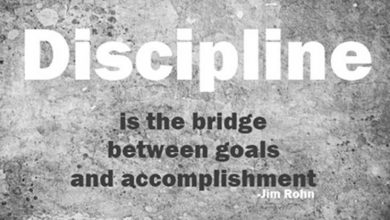Collaboration is an essential skill for everyone who wants to be successful in today’s world. The ability to work effectively with others is crucial in many areas of life, including education. In the classroom, collaboration can take many forms, from small group work to whole-class discussions.
Encouraging peer-to-peer learning can have many benefits, including improved academic performance, social-emotional development, and increased engagement. There are numerous tools you can use to assist you. Even a simple definition template can be a group work task. Here are some strategies for promoting collaboration in the classroom.

1 Create a Positive Classroom Culture
A positive classroom culture is essential for promoting collaboration. Students need to feel safe and comfortable in their learning environment to be willing to take risks and collaborate with their peers.
Teachers can create a good environment in the classroom by setting clear rules for behavior and encouraging students to be respectful and kind. Rules and routines for the classroom should be set up early and kept up throughout the year.
Additionally, educators can create a classroom environment that is conducive to collaboration. This might include arranging desks in small groups, providing opportunities for learners to work on collaborative projects, and creating a culture of open communication where students feel comfortable sharing their ideas and opinions.

2 Assign Group Projects
Group projects are a great way to promote collaboration in the classroom. By working together on a project, students can learn from one another, share their knowledge and expertise, and develop problem-solving skills. When assigning group projects, it is important to provide clear guidelines and expectations for the project, as well as roles and responsibilities for each member of the group.
To ensure that all students are actively engaged in the project, teachers might consider assigning specific tasks or roles to each member of the group. This might include a designated leader, researcher, presenter, or editor. Additionally, teachers can provide opportunities for learners to reflect on their group work and provide feedback to their peers.

3 Use Cooperative Learning Strategies
Cooperative learning strategies are another effective way to promote collaboration in the classroom. These strategies involve students working together to achieve a common goal. Some examples of cooperative learning strategies include think-pair-share, jigsaw, and peer tutoring.
- In think-pair-share, students are asked to think about a question or prompt individually, then share their ideas with a partner. Finally, pairs share their ideas with the whole group.
- In a jigsaw, students are divided into small groups, and each group is given a different piece of information. After becoming experts on their topic, students re-group with members from other groups to share what they have learned.
- In peer tutoring, students are paired together, with one student serving as the tutor and the other as the tutee.

4 Provide Opportunities for Student-Led Learning
Giving students opportunities to take ownership of their learning can be a powerful motivator for collaboration. When learners are given the opportunity to lead discussions, facilitate group work, or present their ideas to the class, they can develop leadership skills and gain confidence in their abilities.
To encourage student-led learning, teachers might consider providing opportunities for students to choose their own topics for research projects or presentations. Educators can also provide opportunities for students to lead small group discussions or facilitate class debates.

5 Encourage Open Communication
When students feel comfortable sharing their ideas and opinions, they are more likely to be engaged in the learning process and willing to collaborate with their peers.
To encourage open communication, teachers can provide opportunities for students to share their thoughts and ideas in a safe and supportive environment. This might include providing opportunities for students to participate in class discussions, asking open-ended questions, and actively listening to students’ responses.

6 Encourage Peer Feedback
In addition to working together on projects and assignments, students can learn a great deal from providing feedback to their peers. Encouraging peer feedback can promote critical thinking, communication, and collaboration skills.
Teachers can give students chances to look over the work of their classmates and give them helpful feedback. This could mean having students edit each other’s work or giving feedback during group presentations.

Final Say
Collaboration is an important part of the learning process. By providing opportunities for students to work together, educators can foster a classroom environment that encourages teamwork and problem-solving. Through group projects, cooperative learning strategies, student-led initiatives, and open communication, educators can help students develop important collaboration skills that will serve them throughout their lives.









